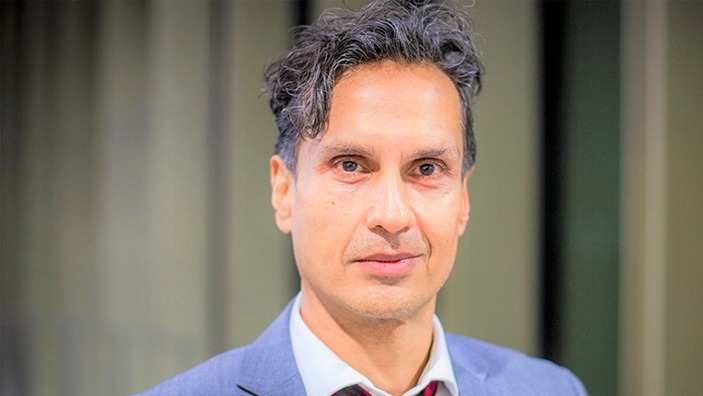As US Founding Father Benjamin Franklin famously noted: “It takes many good deeds to build a good reputation, and only bad one to lose it.”
Research by Shahzad (Shaz) Ansari, Professor of Strategy and Innovation at Cambridge Judge Business School, argues that the reality is a little more complex. For firms in today’s world, reputational damage can occur from a chain of events rather than a single incident.
Consider Boeing, which has faced a chain of reputation-damaging setbacks since the crashes in 2018 and 2019 of its 737 MAX model, in which 350 people died, highlighting production and safety concerns that have significantly impacted its public image. Reputation repair is a strategic imperative, and yet many companies do not heed these wakeup calls to address the root causes when crises emerge.
The research explains this ‘event-response asynchrony’ by understanding how companies manage crises at different levels and why certain events draw executive attention while others do not. The study proposes a framework to understand this dynamic, revealing how specific events can trigger significant organisational changes.
How do companies respond to reputational incidents?

“Our findings show that the reputation-damaging events with the greatest impact on top management aren’t always the largest events or the most recent”, says co-author Professor Shaz Ansari of Cambridge Judge Business School. “Instead, certain historic incidents gradually built up in perceived relevance over time, with discernible patterns emerging which form an eventual tipping point that triggers a major organisational response.”
The research shows that not all major or recent events immediately impact top management decisions. Instead, some historical incidents gain relevance over time, eventually reaching a ‘tipping point’ that demands a significant response. This insight challenges the conventional focus on immediate, isolated or major incidents, or those happening in quick succession. Instead, Shaz and his co-authors suggest a more complex pattern of reputation management— unfolding chains or cycles without an obvious beginning, middle and end – that unfolds over time.
The study focuses on a multinational corporation in the property services industry undergoing significant reputation repair. At that time, the company (using the pseudonym Enigma) had a market capitalisation of approximately $5 billion and over 10,000 employees, with operations in the Americas, Asia-Pacific, Europe, and the Middle East.
The study analyses the response of the company to 47 well-documented reputational incidents spanning a decade. Reputation-damaging incidents ranged from shareholder protests over executive pay to serious allegations of bribery and environmental harm. Interestingly, not all incidents were treated equally by senior management. Some events, even if they were minor or occurred long ago, were seen as crucial in deciding to undertake a substantive repair strategy.
“Counterintuitively, it emerged that RDE (reputation-damaging event) scale, proximity and direction did not adequately explain whether top management considered an RDE to be problematic,” the study says. “For example, though allegations of corrupt dealings with government officials surfaced only months prior to initiation, this RDE was not viewed as causative. In contrast, the divestment of a subsidiary 9 years earlier, a move initially derided by shareholders but celebrated internally, came to be regarded as a pivotal RDE by all respondents.”
Our findings show that the reputation-damaging events with the greatest impact on top management aren’t always the largest events or the most recent. Instead, certain historic incidents gradually built up in perceived relevance over time, with discernible patterns emerging which form an eventual tipping point that triggers a major organisational response.
Using a systems perspective to identify event cycles in reputational damage
Shaz and his co-authors developed a framework of adaptive event cycles spanning various organisational levels to describe how companies navigate through stable periods and times of crisis. This framework is not merely about how one event can trigger another, but how these event chains can repeat themselves to become event cycles.”
The authors found each event cycle consisted of a ‘foreloop’, indicating a stable or routine operational state, punctuated periodically by a ’backloop’, denoting a phase of adaptation and correction.
Foreloop: the business-as-usual status quo
This pertains to regular business periods where minor issues are managed at lower organisational levels.
1
Reputation-damaging events are ubiquitous and to be expected
Whereas middle and frontline managers were more anomaly seeking – trying to resolve individual issues – top management demonstrated pattern-seeking tendencies, focusing on linking multiple reputation-damaging events (RDEs). A small minority of the individual issues escalated to become newsworthy, compared to the RDEs directly caused by senior management decisions which cascaded down the organisation before ricocheting back up to the top.
2
Subsystems of the organisation can be trusted to adapt
Top management viewed Enigma as a series of interrelated subsystems (departments, divisions, projects, etc.) rather than a homogenous system. The subsystems (run by middle managers) excelled at managing reputation-related risks at these lower levels. By trusting these efficient subsystems, senior managers believe they were spared the need to attend or engage with most RDEs and so could purposefully avoid them.
Backloop: 3 event patterns that trigger substantive repair
This pertains to times when accumulated minor issues lead to significant changes, showing that even small shocks can destabilise the system if it becomes fragile.
1
Traceback chain events
Certain reputation-damaging events (RDEs) intermittently revealed causal linkages that could be traced back to a historic originating event, such as unsafe working conditions at a site.
2
Rigidification event chains
Some RDEs formed event chains that reflected growing inflexibility. These patterns revealed that departments and employees were becoming increasingly preoccupied with processes and had lost touch with principles that facilitated effective responses.
3
Surge event chains
These disruptive events happened rapidly across a broad geographical range. Despite their quick succession and widespread impact, these events had no discernible root cause.
Why loss of confidence from management can trigger major repair responses
The research finds that as the system becomes more fragile, the occurrence of even relatively smaller shocks can trigger a backloop event chain that appears chaotic, disjointed and non-linear. In other words, even a minor event can trigger substantive repair efforts.
“This undermined top management’s faith in the adaptive and self-corrective ability of the system and allowed even small-scale events to trigger a substantive response”, the study says.
“To repair its reputation, the organisational system flipped from stability to reform, characterised by a major, rapid reorganisation via its substantive repair programme. Like falling dominoes, event chains set off a series of repair efforts.
“Our findings suggest that faster and smaller event cycles lower in the organisational hierarchy trickle up – mediated by top management’s attentional structures – to trigger discontinuity in otherwise slow and broad higher level event cycles (organisational backloop). This backloop then cascades downward to further influence faster and smaller event cycles (adaptive repair within subsystems). Although instigated by event chains that trickle-up, this change at the top of the hierarchy is likely to occur abruptly, even it remains largely dormant.”
To repair its reputation, the organisational system flipped from stability to reform, characterised by a major, rapid reorganisation via its substantive repair programme. Like falling dominoes, event chains set off a series of repair efforts.
How to derive insight from a multinational corporation
As well as interviews with Enigma’s top management, data was collected from speaking to the firm’s clients in each geographical region, company records and correspondence. The interviews with management and clients were conducted by one of the co-authors, who also engaged in observational study by taking part in workshops held by Enigma executives. The co-author kept detailed fieldnotes when collecting and interpreting data and also took regular breaks from the site to maintain detachment.
A database was constructed of chronologically ordered reputation-damaging events (RDEs) and reputation repair activities. To mitigate the large degree of variance among RDEs, the database included where the RDE was reported, which stakeholder groups were affected, and the extent of the impact on each group. During the interviews it was noted which RDEs were being discussed by senior management and which were not. A pattern emerged, showing executives placed more importance on the formation of RDE event chains and relational characteristics than on individual events.
Why do executives choose to avoid reputation repair?
The study examines executives’ purposeful avoidance of reputation repair. The research also highlighted that top management tends to prioritise systemic patterns over individual incidents, indicating a focus on broader organisational impact rather than isolated events.
In certain circumstances it can be viewed as a status quo response that does not signal inaction as failure, but rather faith in the system to enable business as usual. In particular, top management rationalised that interfering would create undesired ripple effects that could harm the functioning of the organisation.
Understanding of long-term reputational management can help during crisis
This study offers valuable insights for executives on the importance of monitoring not just the scale or recency of events but their interconnected nature. It suggests that a deeper understanding of event patterns can better prepare companies for necessary reputational repairs, emphasising the need for a proactive approach to managing potential crises.
Future research might explore the emotional and psychological factors that influence executive decisions on reputation management, including how companies navigate complex or ‘polycrisis’ crises that span economic, environmental, and geopolitical boundaries.
The study has the limitations associated with research on a single case study. For example, the setting of a large, for-profit multinational firm in the property sector could have affected top management’s actions and interpretations because high-reputation firms may believe strongly in their construed image and be less responsive than other firms. In addition, companies with a simpler organisational structure might conduct multiple substantive repairs over a shorter period. The authors also note they focused on RDEs that led to a substantive repair programme, and by doing that may have missed other repair efforts triggered by a given event in the dataset.
The study, ‘Reputation-damaging events over a long-time horizon: an event-system model of substantive reputation repair’, was published in the Journal of Management. The co-authors are Jarrod P. Vassallo, University of Sydney Business School, The University of Sydney; Yeonji Seo, University of Sydney Business School, University of Sydney; and Professor Shaz Ansari, Cambridge Judge Business School, University of Cambridge.
The study provides a nuanced view of how long-term reputational management can inform better leadership practices in times of crisis.
Featured research
Vassallo, J.P., Seo, Y. and Ansari, S. (2024) “Reputation-damaging events over a long time horizon: an event-system model of substantive reputation repair.” Journal of Management (DOI: 10.1177/01492063231224353) (published online Feb 2024)
Related content
Boeing faced reputation damaging setbacks since the crashes of its 737 MAX model in 2018 and 2019.





